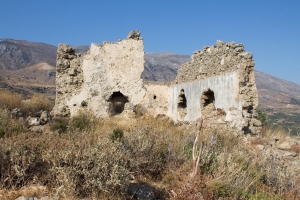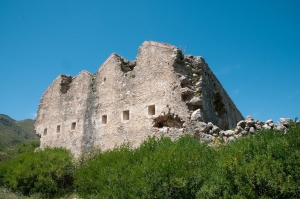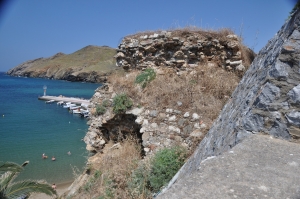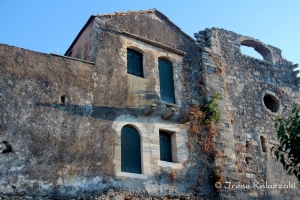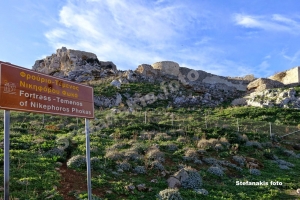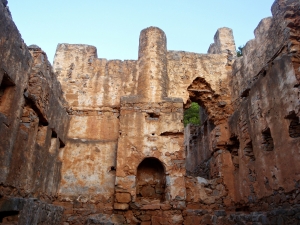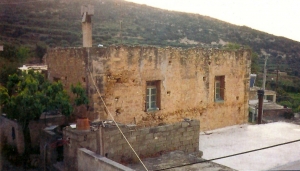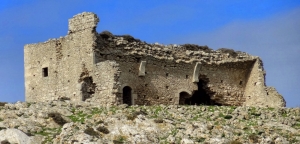One of the many Turkish towers (Koules) built by the Turks in Crete is that of Plakias at South Rethymno. It was built on a hill of conglomerate grounds, with steep cliffs at its east and south sides, inside a fortified enclosure.
The most important passage of Rethymnon prefecture was that of Agios Vasilios (south), through where Turks and Greeks traveled from Mesara plain to Sfakia area. Thus, several towers (kouledes) were built. Such one Koules was built near the entrance of the gorge Kourtaliotis, near the village Koxare. The tower was partially destroyed by the Cretan rebels in 1896.
In the province of Mylopotamos, one more mountainous provinces in Crete, there were two fortresses. The first was built in the seaside village of Panormos, while the second near th village Saint Mamas.
Embrosneros hosted the chateau of one of the most terrible janissaries in Crete, the Turk Ibrahim Alidakis. Alidakis owned a vast property, which he had stolen from the Greeks, and became the greatest aga of the area. In the nearby plateau of Vothonas, Alidakis raised his horses.
The village of Kanli Castelli, today known as Prophet Elijah, is located about 18km south of Heraklion, at the start of Malades valley. The village is situated at the foot of the steep two-peaked hill Rocca, on which even today there ruins of the fort Kanli Castelli, after which Prophet Elijah took its old name.
On the west side of the exit of Samaria Gorge, above the current village of Agia Roumeli, the Turks built the Koules of Agia Roumeli to suppress the rebels hiding in the gorge. This Koules is in quite good condition. There were three more towers in wider area of Agia Roumeli (in Skoteini, Aggelokambos and Sideris positions)
Zou is a small green village located 7km south of Sitia. Its name probably derives from the Turkish word su, which means water, as water abounds here, flowing from the famous springs of Zou.











